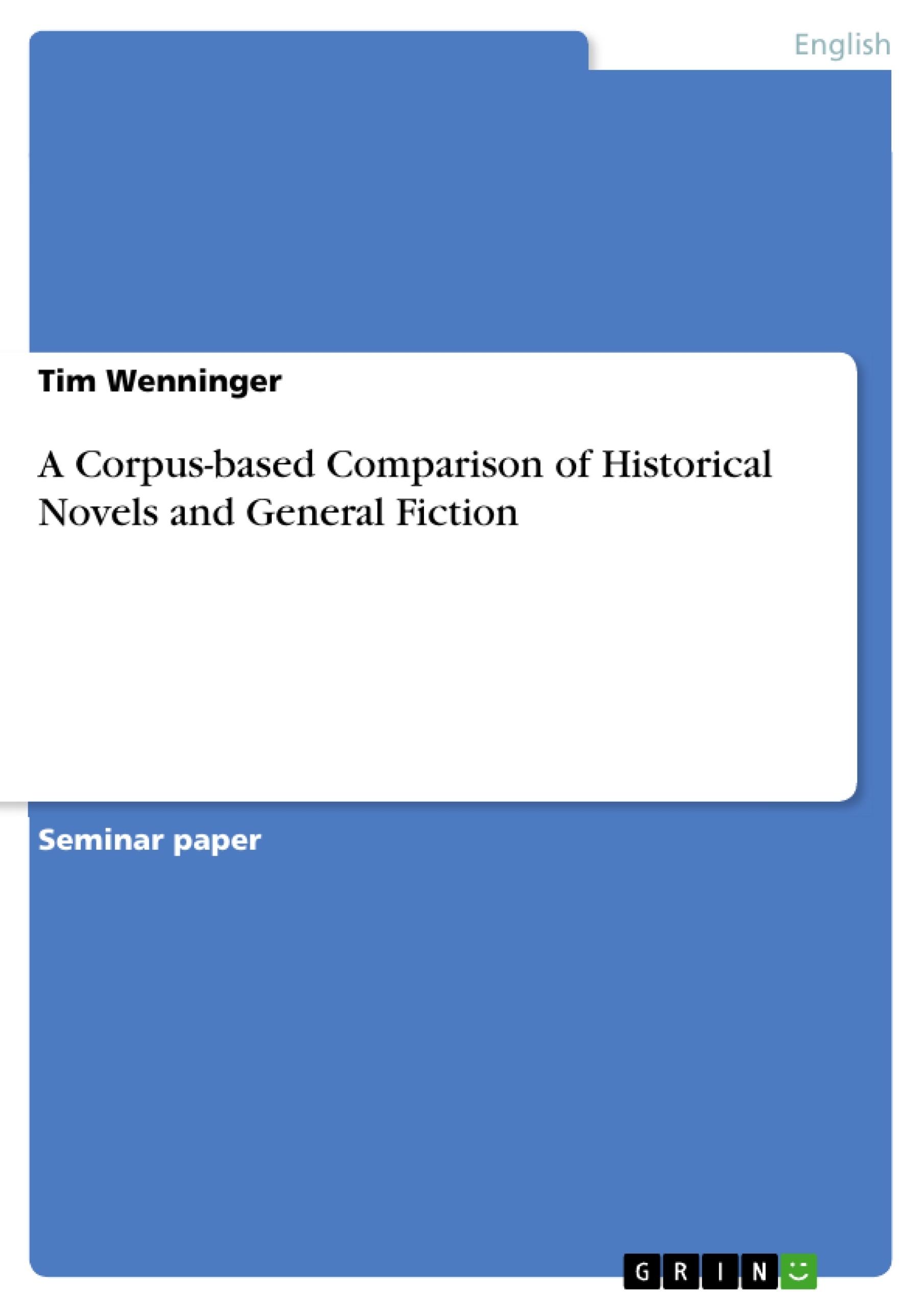Everyone who has been to a book store within the last decade will have undoubtedly noticed the big bookshelves displaying novels that have made it on the bestseller list. Whilst many people might assume that the majority of these books are simply fictional novels, there are, however, a large number of historical novels among these bestsellers. Books by Ken Follett or Dan Brown are most certainly known by everyone interested in reading novels. The growing popularity of historical novels not only becomes evident by looking at the public perception, but also by considering the number of seminars and research papers that deal with this topic on an academic level.
Given the fact that historical novels have been enjoying increased popularity over the last couple of years, it is without doubt that these novels have to feature certain distinctive characteristics that make them stand out with regard to general fiction. Therefore, this term paper seeks to illustrate possible ways in which historical novels differ from common literary works. This will be done by using a corpus-based analysis in order to find word patterns or sentence structures that occur more frequently in historical novels.
Considering my own experiences from reading historical novels and the common knowledge of many historical periods, certain assumption can be put forward concerning the increased likeliness of words connected to religion, warfare and royalty being encountered in this corpus-based research. However, not only will it remain to be seen if these intuitions are valid, but it will also be interesting to observe if other not aforehand mentioned categories can be identified based on the results provided by this corpus analysis.
The first section of this paper will give a short overview of historical novels in general and thereby also a first impression of common characteristics. The following section will briefly summarize the methods which have been used to gain useful corpus-based information. The main body of this paper will then discuss and categorize the results with the aim of providing a solid base for a final concluding statement concerning our hypothesis.
Table of Contents
1. Introduction
2. Historical Novels - A quick overview of general characteristics
3. Data and methods
4. Results and discussion
4.1. Royalty, clergy and the common man
4.2. Landscapes and lighting
4.3. The human body and its behaviour
4.4. Drinking, driving and discovering
4.5. A variety of accommodations
4.6. Fashion and profession
4.7. War, waves and weapons
5. Conclusion
6. References
- Arbeit zitieren
- Tim Wenninger (Autor:in), 2018, A Corpus-based Comparison of Historical Novels and General Fiction, München, GRIN Verlag, https://www.grin.com/document/459812
-

-

-

-
Laden Sie Ihre eigenen Arbeiten hoch! Geld verdienen und iPhone X gewinnen. -

-
Laden Sie Ihre eigenen Arbeiten hoch! Geld verdienen und iPhone X gewinnen. -

-
Laden Sie Ihre eigenen Arbeiten hoch! Geld verdienen und iPhone X gewinnen. -

-
Laden Sie Ihre eigenen Arbeiten hoch! Geld verdienen und iPhone X gewinnen. -

-
Laden Sie Ihre eigenen Arbeiten hoch! Geld verdienen und iPhone X gewinnen. -

-
Laden Sie Ihre eigenen Arbeiten hoch! Geld verdienen und iPhone X gewinnen. -

-
Laden Sie Ihre eigenen Arbeiten hoch! Geld verdienen und iPhone X gewinnen. -

-
Laden Sie Ihre eigenen Arbeiten hoch! Geld verdienen und iPhone X gewinnen.

